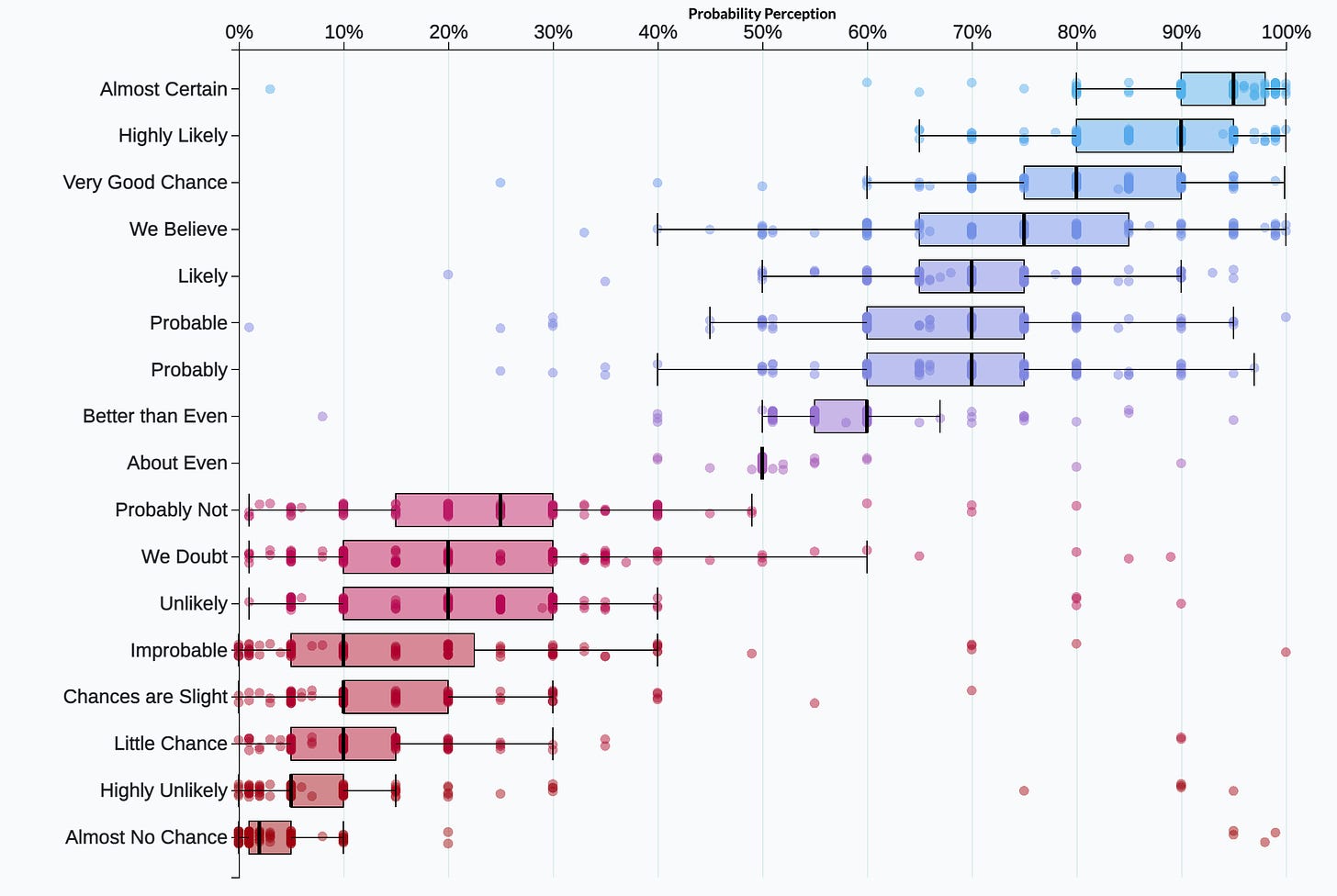TBM 34/52: Words Matter—Strategy & Certainty
Consider how most strategies are a collection of assumptions that vary in terms of:
The current level of certainty
The current direction of certainty (is it increasing or decreasing)
The impact of being 100% wrong, a bit off, etc.
The impact of being 100% right, mostly right, etc.
Certainty in our assessment of impact (right or wrong)
Resolution of the assumption: is it more general or more specific?
The degree to which competitors widely accept the assumption
A company might have high certainty in some "foundational beliefs" that the rest of the industry also holds. Certainty isn't budging/moving. But from a strategy standpoint, these beliefs aren't opinionated enough to catalyze focus. "They just…are."
Until they aren't, of course, and this is when disruption happens.
Meanwhile, at the same company, some assumptions have rapidly decreasing certainty (perhaps due to economic events). This shift is a catalyst for new, emergent assumptions (low certainty, more general, but increasing certainty and specificity). These new assumptions may be asymmetric—relatively low impact if wrong, but high impact if right. And they are pretty unique and opinionated because there's no consensus in the industry.
In short, our belief system is dynamic and emergent. We're not sure about everything; we aren't uncertain about everything. Some beliefs are waning, and some are waxing. The impact is not always symmetric.
Next, consider some example statements:
In the next six months, we believe the economic situation will force Competitor 1 to raise its prices due to the economy. It is highly unlikely those conditions will impact us with that degree of severity.
We are almost certain that Competitor 2's shift in strategy will give us increased opportunities to win head-to-head deals against C2 in the coming months. Chances are about even that we will exceed $5,000,000 in new ARR due to this.
SSO will probably not be a critical factor in deals for the next six to twelve months.
OK, keeping the statements from above in mind, check out this research:
Since the 1960s, numerous researchers have attempted to understand the perception of probabilistic words. This post describes the background and attempts to replicate the research. Here is the author's attempt:
What did you notice? How did you perceive my use of we believe, highly unlikely, probably not, better than even, highly likely, may, almost certain, and about even?
Did you notice how the shaded boxes (the middle-50% of responses) are wider for some words and narrower for others? We believe is very wide. "The middle 50% of all respondents perceive we believe to be between 65% - 85%". We believe also had a cluster of responses at 100%!
What am I getting at?
There is an extremely high premium on communicating strategies with confidence. But:
Companies don't build strategies solely on high-certainty beliefs. Uncertainty is a signal of opportunity—unless your competitors are out-learning you.
No company in a competitive market will be sure about everything. You will likely be late if you wait for 100% certainty. But if you go charging ahead based on new, emergent assumptions, you may go terribly wrong (unless you call it out).
Words are slippery, even when you are trying to convey probabilities and certainty
I speak with so many companies about their product strategies. And one consistent theme is a lack of discipline when it comes to talking about uncertainty. They either manufacture certainty. Or refuse to change their strategy "officially" until they are 100% certain. Neither approach works. It causes major whiplash.
Or they use words like “we believe” in loose, and ineffective ways.
So…
Revisit some of the assumptions underpinning your current strategy and detail them according to the bulleted list in section one. Then filter how you discuss strategy through the list of probabilistic words—attempting to steer clear of the words with a wide band (or better yet, providing confidence intervals and avoiding the words altogether).
Go word by word. Ask others to go word by word. Invite critique.
Coherence and uncertainty are not incompatible.




